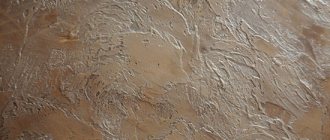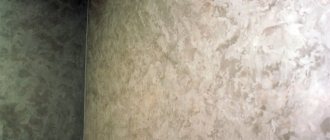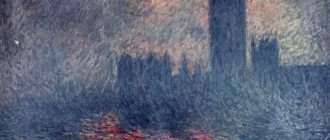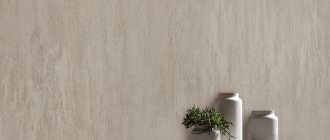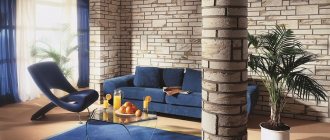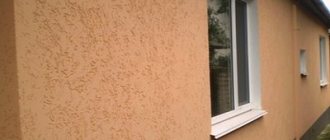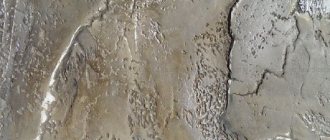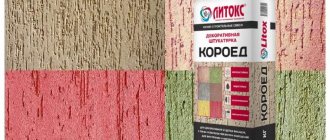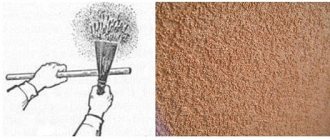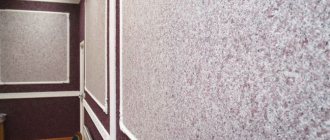One-step craquelure (one-component) is one of the decorating techniques, once you become familiar with it, you can make original crafts for the interior of your home. There are other directions, such as patination, gilding, decoupage and several more. All of them can be combined, complemented and added individual notes. We'll get to know all the techniques later, but let's start with a very bright and impressive one-component craquelure.
What is one-component craquelure?
Craquelure (“fr” craquelure) translated from French is a crack in the paint layer or varnish in a work of painting. One-step craquelure is used to age simple plain surfaces. To do this, the surface of the object to be decorated is covered with the main background. This is the color the cracks will be. After the paint has completely dried, a one-step craquelure varnish is applied with simple movements in one direction and dried again. Next, paint of the main color is applied, under the influence of which the craquelure varnish begins to crack, and the background paint appears in the cracks. The finished product can be coated with a clear varnish for acrylic paints for durability.
The concept of one-component implies the use of one product (component) in the decorating process. It is worth highlighting that two-component and one-component compositions can give the effect of simple cracking. At the same time, single-component ones can cause cracks in both varnish and paint.
The general scheme of a one-component pie is as follows:
- The first stage consists of high-quality preparation and priming of the workpiece.
- Then we paint it the color we want to see in the cracks and dry it completely,
- Next we apply craquelure varnish. Let it dry a little (here are the following nuances - the longer you dry it, the smaller and longer the cracks will be).
- Apply top coat paint.
- After it you can patina or varnish.
As a result of these manipulations, the craquelure varnish, due to the difference in surface tension, cracks the paint of the main color and the previous layer of paint is visible in the cracks. For clarity, it is recommended to watch the following video:
Types of craquelure coating
Crackling varnish became famous in Russia already in 2011, and at that time this new nail design had only 8 shades. Now everything has changed and the palette has become much wider.
There are hard and soft types of craquelure, and the difference between these two coatings is that the soft one has a lighter texture, while the hard one develops pronounced cracks. Apart from this, crackling nail polish is capable of creating designs such as python, reptile, crocodile, spider web and fence crack.
- Python. When creating such a design, craquelure nail polish, when dried, forms an imitation of python skin.
- Crocodile, reptile. When it dries, the craquelure effect coating turns your nail art into something like crocodile skin.
- Web. A manicure with a cracking finish forms an interesting pattern on the nails of small cracks that look like a spider web. Another name for this nail art is Spider-craquelure.
- Fence crack. One of the most interesting nail designs. After drying, large cracks form on the nails, looking like an old, shabby fence.
What to pay attention to
When applying the top coat of paint, you must adhere to the following rules:
- You cannot paint twice in the same place, as cracks begin to form immediately, and it is possible to paint over them.
- At one time, the paint should be applied as evenly as possible, covering the layer so that the underlying paint does not show through.
- The consistency of the main color paint is very important - not liquid, but not thick, so that the craquelure varnish allows it to crack.
- It is important to apply this paint evenly, with equal pressure on the brush. If the pressure is stronger, the paint layer will be thin, the cracks will be long and elongated, thin (when applied with a brush) or small and “scaly” (when applied with a sponge).
To recreate beautiful natural cracks, you need to correctly combine a sponge, a brush, layers of paint and drying the craquelure varnish. And, naturally, the selection of the optimal craquelure composition is no less important. Therefore, the nature of the cracks depends entirely on:
- Craquelure composition.
- The thickness of the varnish layer.
- Drying conditions.
- Consistency of top coat paint.
- Thickness of the top layer of paint.
Experiments
In the instructions for applying gel polish, great emphasis is placed on the fact that the cracking effect is best manifested when the sticky layer is not removed from the substrate. I decided to check whether the effect would work if I removed the sticky layer and if I used any other gel polish with a sticky layer as a base. As a result I received the following:
- Without the sticky layer, no cracks were created (left tip).
- On gel polish with a sticky layer from another manufacturer, the craquelure appeared just as well as on the original special substrate (right tip), which means there is absolutely no need to buy them in a set!
I decided to go further. Since TNL craquelure dries in the air, I wondered if it could be used on regular nail polish and, conversely, whether craquelure varnish could be used on gel polish. Total:
- Craquelure from TNL also cracks and dries well on regular varnish (right tip).
- But the usual craquelure varnish (I used from Dance Legend) did not show up on the gel polish, it just became matte (left tip).
I hope my review was helpful. Thank you for reading to the end :)
Gel polishes were provided for review by the online store KrasotkaPro.ru
Which varnish to choose for one-step craquelure
One-step craquelure varnish is a water-based product that looks like a liquid paste. It dries extremely slowly. And acrylic paint applied on top of such a composition dries simply quickly in comparison. That is why its cracking occurs, provoked by movement in the underlying layer.
Varnish for one-step craquelure
On sale on the shelves of craft stores you can find many jars of one-component compositions from various manufacturers. The most common one-step varnishes that are used are:
- Craquelure varnish - DECOLA (Russia).
- Craquelle Medium - Hobby Line (Germany).
- Krakelierlack - Nerchau company (Germany).
- Krakelee Medium - Marabu (Germany).
- Antique Effekt - Sadolin (Denmark).
- Idea Decoupage - Maimeri company (Italy).
- Krakelierlack DecoArt medium - Rayher (Germany).
- Crackle Medium - Decorfin (Holland).
- Craquelure paint Krakelierfarbe - Glorex (Switzerland).
- One-step craquelure varnish - Ars Hobby company (Russia).
- One-step craquelure varnish - Tair company (Russia).
- One-step craquelure varnish - Aqua-color company (Russia).
- Country Style Crackle - Stamperia (Italy).
- One-step varnish Vintage design “I am a decorator” - Rusart company (Russia).
Unfortunately, each composition gives its own peculiar cracks, and it is unlikely that you will be able to choose the composition that you will definitely like the first time. Therefore, you should experiment with different compositions. Feel them and choose the best one for yourself.
Mistakes that are best avoided in one-step craquelure
Follow the instructions to avoid mistakes
Errors in preparing the base
- The porous base will absorb the craquelure medium, which will not be able to produce full cracks in the subsequent paint layer.
- Only one, thin or uneven, layer of primer or acrylic paint is applied to the base.
- The compositions are applied with a coarse (bristle) brush.
- A well-prepared base (wood, plaster, plastic, ceramics, etc.) is a surface with two layers of acrylic paint or primer.
- If you want to keep the color and texture of the base, you can coat it with a clear finishing varnish with a glossy or matte effect.
- Each layer of product applied to the base must be thoroughly dried.
Application of craquelure medium (composition)
As a rule, all craquelure compositions, regardless of price and manufacturer, allow you to achieve a cracking effect. They each do it in their own way, and working with each of them takes a little getting used to. However, there are general operating rules.
Typical mistakes:
- The craquelure varnish medium was not mixed before use or was mixed too much and contains many air bubbles.
- An uneven layer of craquelure varnish is applied to the base (if unintentional, this is considered a mistake).
- The composition is applied with a rough, for example, bristle brush, leaving “grooves”.
Rules:
- Before use, you need to mix the composition well (for a uniform consistency) and wait a little (until any possible air bubbles disappear).
- Apply the composition with a flat synthetic brush (for a smooth, “grooved” coating). A thin layer of the product will cause small cracks, a thick layer will cause large cracks. An uneven layer will produce cracks of different sizes.
- If the composition is applied only to certain parts of the work, then craquelure will appear only in these places.
- The movements of the brush are directed in one direction, the composition is applied to the surface at a time.
Applying acrylic paint
This is perhaps the most subtle moment in the whole work. The final appearance of the work on creating cracks depends on the timing of this stage, the accuracy and uniformity of paint application.
Typical mistakes:
- The paint is applied too early, that is, when the craquelure varnish has not yet dried enough (it sticks and gets dirty).
- The paint is applied too late. This is a different period for different compositions (you need to look at the description).
- The paint is applied in random directions (if not intended).
- The paint is not applied “in one pass”, but is applied to the still wet layer again or “fiddled” back and forth with a brush.
- A rough or, conversely, too soft (not elastic) brush is used.
Rules:
- The paint is applied at the moment when the craquelure varnish stops staining your finger when you touch it, but still sticks.
- To obtain large and rough cracks, the paint can be applied a little ahead of time, making confident impasto strokes.
- To speed up the drying of the product, you can use a warm stream from a hair dryer.
- All areas with craquelure varnish must be covered with paint.
- The paint must be applied strictly in one layer (do not move the brush over the same place).
- The movements of the brush are directed in the same direction as when applying the medium (unless otherwise provided by the design).
- The composition is applied with a flat synthetic brush (for an even, “grooved” coating).
- A thin layer of paint will give thinner and more graceful cracks, a thick layer will produce larger and deeper ones. An uneven layer will produce cracks of different sizes and types.
Drying one-step craquelure
It's quite difficult to make a mistake at this stage. To speed up the final result, two options are possible: wait until everything happens on its own, or speed up the process of crack formation using a warm jet of a hair dryer (a hair dryer will also work).
Rules:
- Cracks begin to appear almost immediately, especially if the compounds are applied in a thin layer.
- Large cracks appear first, then they continue to grow and, as a rule, are covered with a network of smaller cracks.
- The heating process speeds up this process.
Two-step craquelure
• The cleaned surface of the object is covered with 2 layers of acrylic varnish. After it dries, a generous layer of shellac is applied to it. The thicker it is, the larger and rougher the cracks will be. To obtain a barely noticeable openwork mesh, a thin layer of shellac will be enough. When applying this substance, possible smudges should be avoided, since this error is almost impossible to correct.
